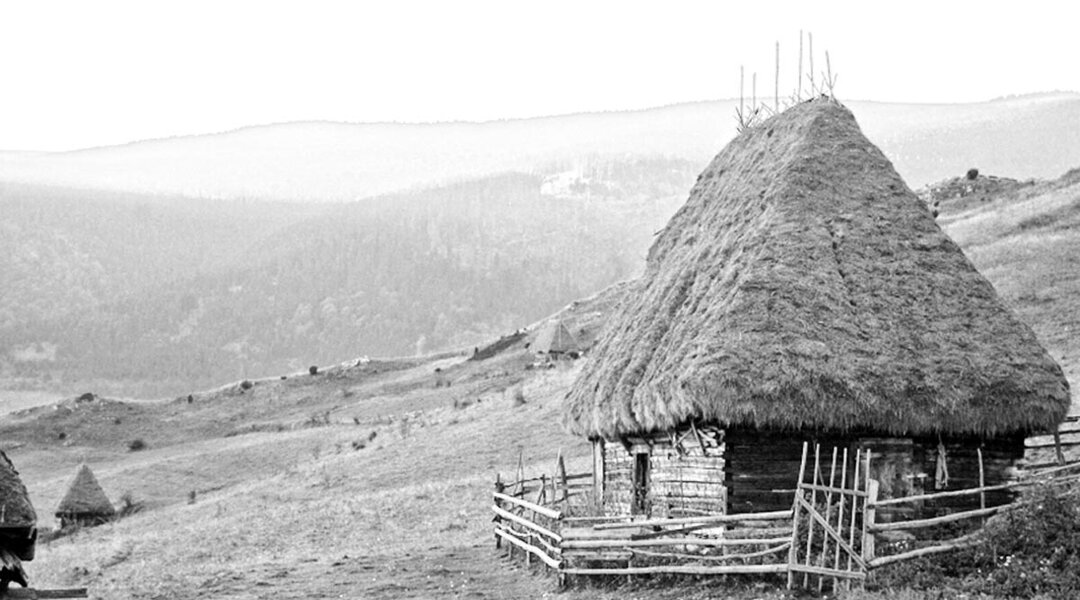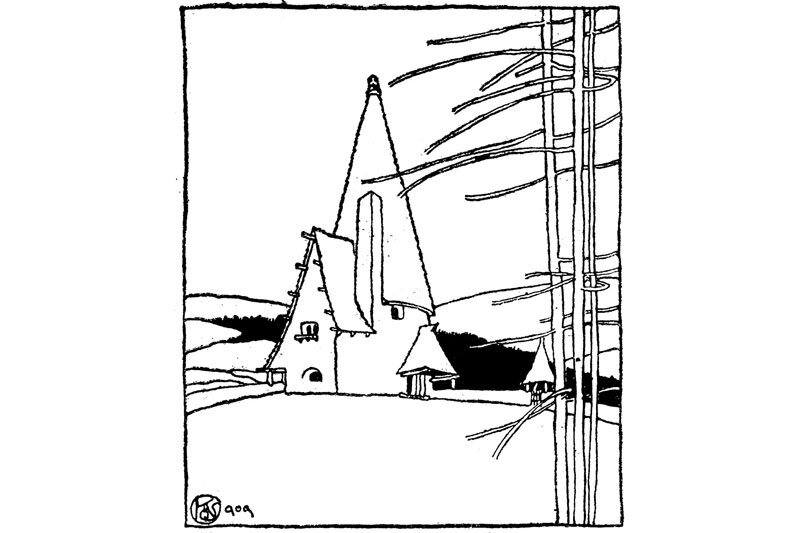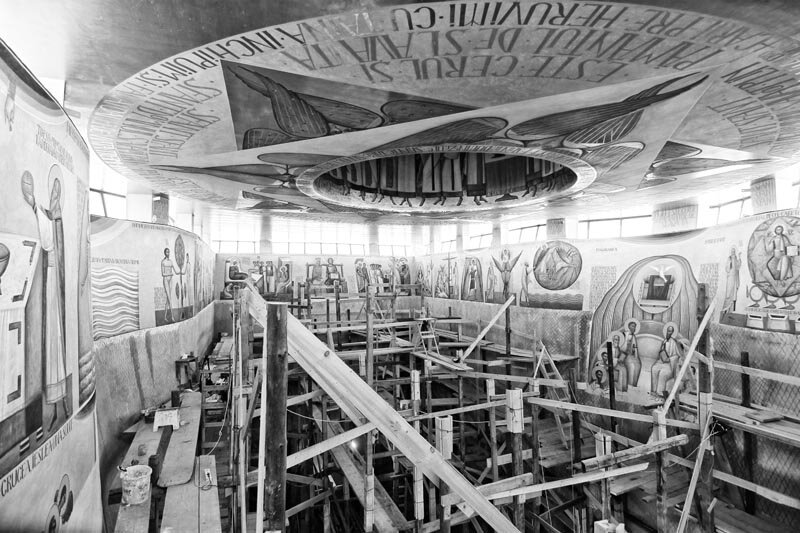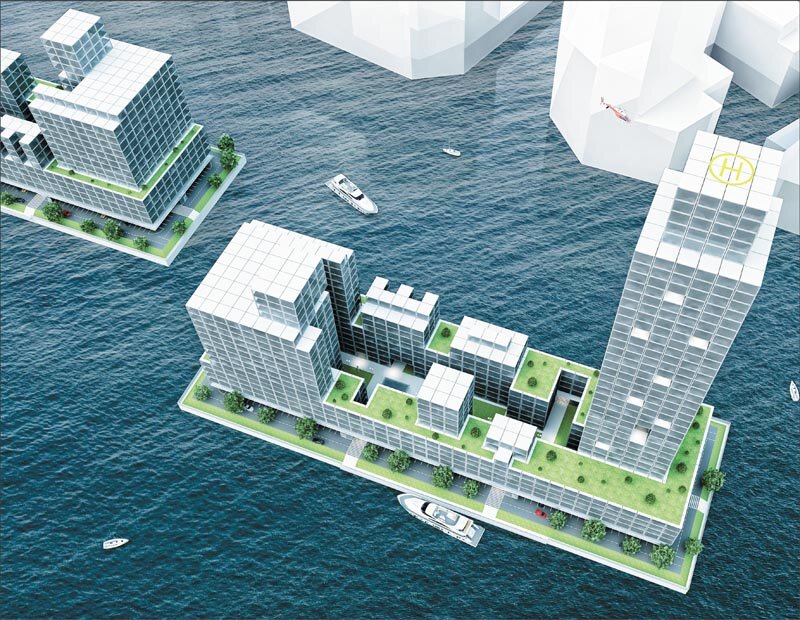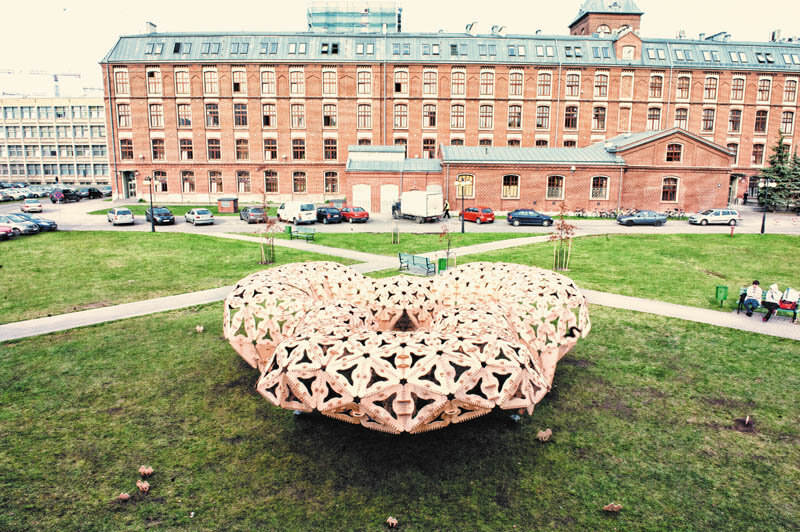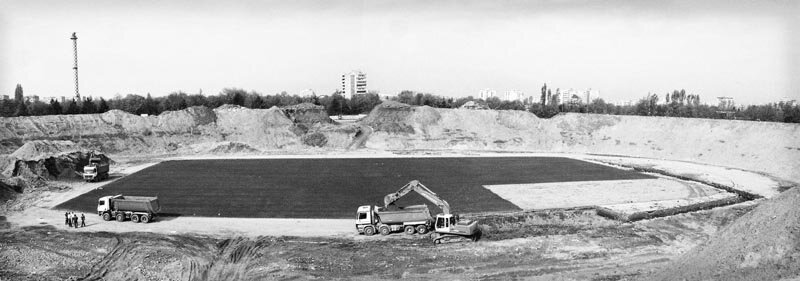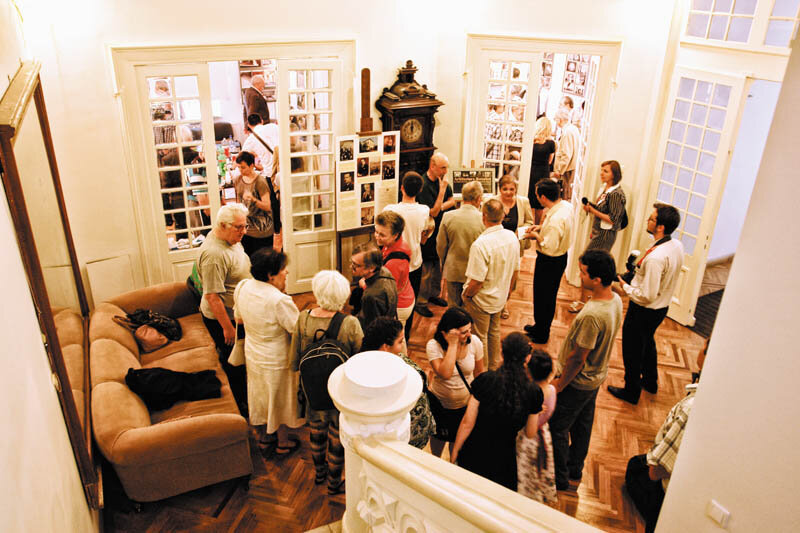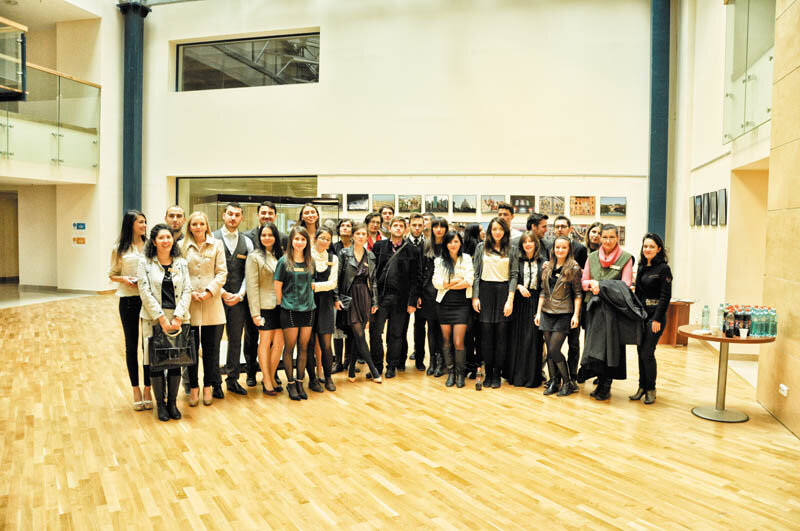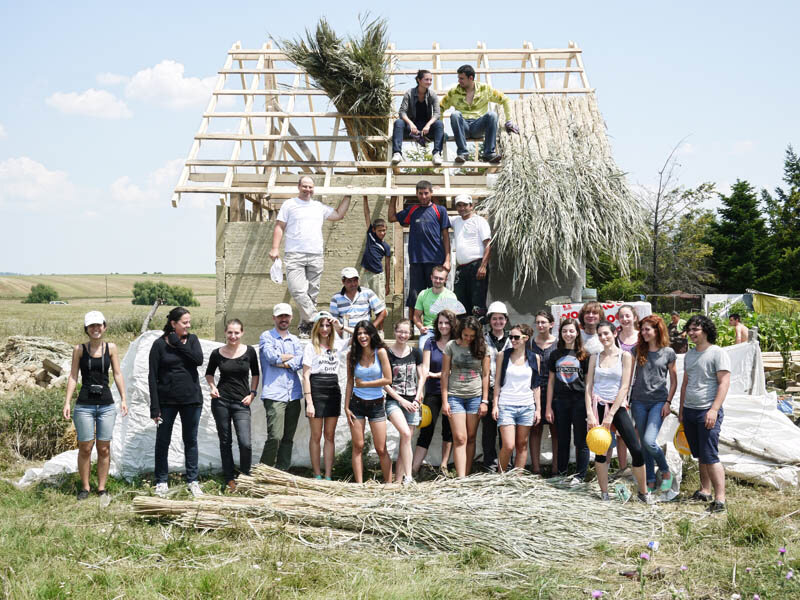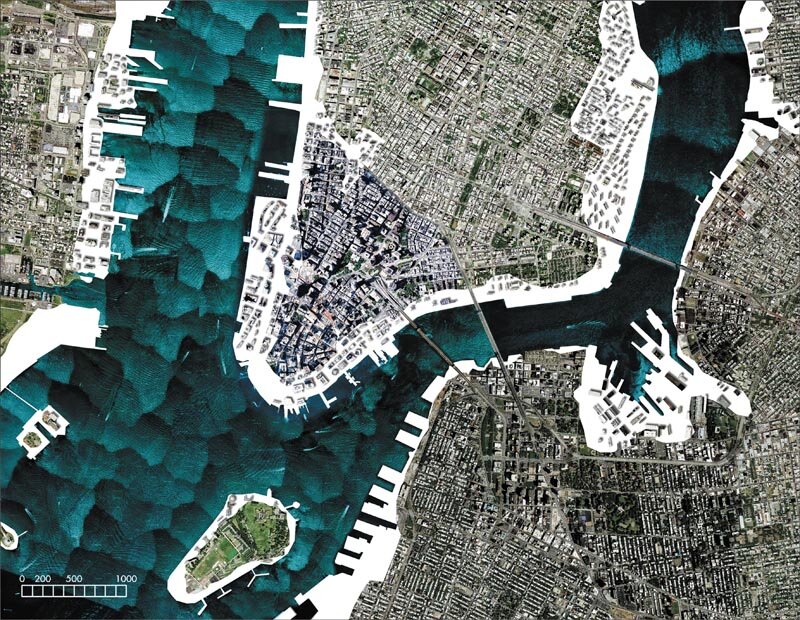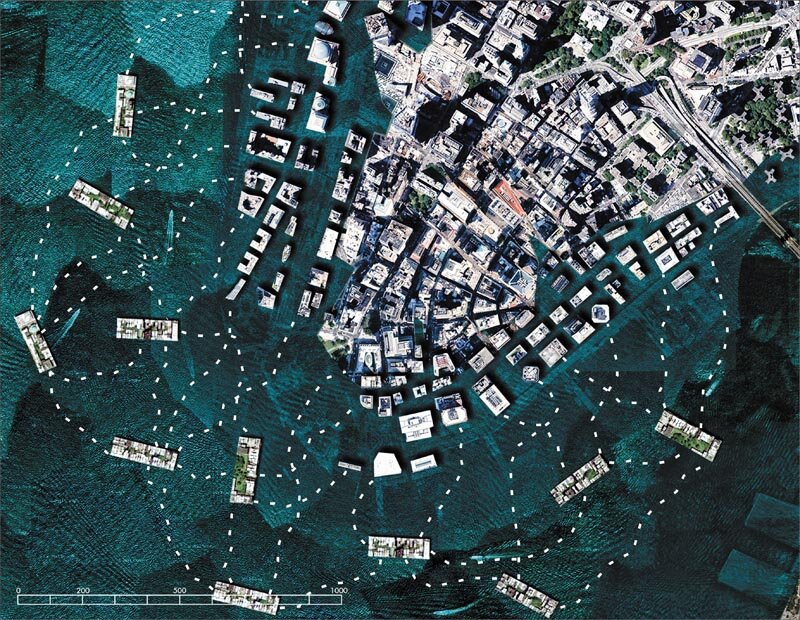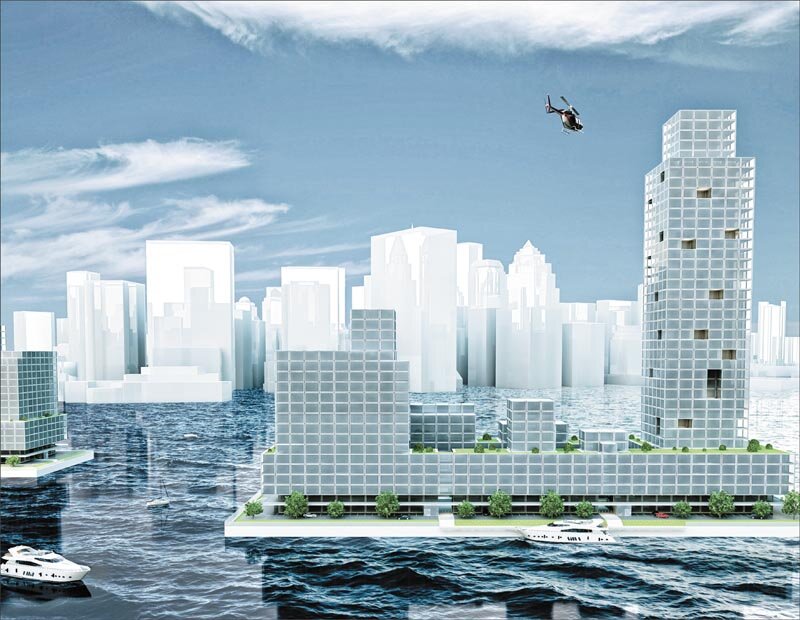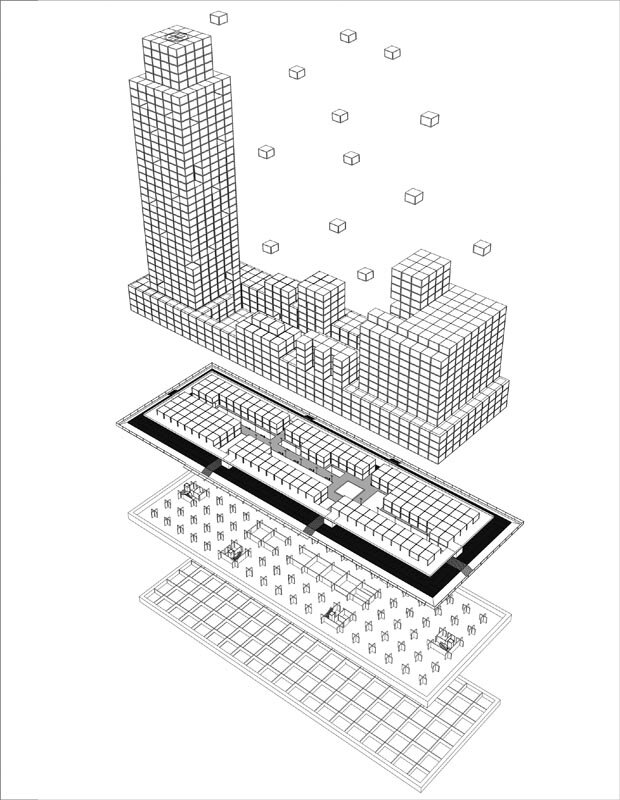
New York. A retro version of the future. 2013
In the words of architect and theorist Rem Koolhaas, "Manhattan is a theater of progress"1, constantly offering a preview of the future and the possibilities it holds, and is a global architectural and artistic stage.
Manhattan is written according to a very complex recipe, repeatedly rewritten by its creators, with the grid, the block and the tower as its basic ingredients. Together, these elements shape the city's distinctive image, working in an interdependent balance. The New York island thus functions as a 'city within a city'2, with both autonomy and independence.
As a result of global warming, rising water levels on Earth are inevitable, and the threat of climate cataclysms - extensive. The present project proposes a spatial reorganization of New York, taking into account its basic elements and their interrelationships, attempting to provide a viable solution to the rising water levels (manifested distinctly in the flooding of the Hudson and East Rivers).
In the design, the grid, the block and the tower are retained as centerpieces, instead being rethought in terms of their structure and arrangement within the metropolis. As a general rule, the grid becomes fluid and loses its characteristic rigidity, the urban island becomes mobile, and the tower remains a fixed element and a representative image of the city.
Emergency architecture is a field that emerges for different reasons than other types of architecture. It legitimizes spatial proposals that are built following catastrophes and disasters. Solutions require a rapid and timely response, based on efficiency and functionality. "Architecture in emergencies fills a void and cancels or tempers the drama that has been created"3, offering a provisional or definitive alternative for the new urban order.
The image of the world is changing daily. What it is today will not be the same tomorrow, because what we had yesterday has been consumed. So we end up asking ourselves what can replace the reality of nature and the objects we consume faster than we can reinvent them? For example, in this sense, Dali's paranoico-critical method is both a product of and a remedy against reinvention anxiety: "it promises that through conceptual recycling, the world's outmoded, consumed content can be recharged or enriched, like uranium, and that new generations of false facts and fabricated evidence can be generated simply by the act of interpretation"4. By extension, the Future can be fabricated from elements of the past reinterpreted and reassembled into a new order, operating according to new principles on the ground of the old.
"Architecture is (means) the imposition on the world of structures it never asked for and which previously existed only as clouds of conjecture in the minds of its creators. Architecture is inevitably a form of paranoico-critical activity"5. The role of the architect is to transform speculation, probability and dream into reality. By imposing an analogy between the past and the present, the past can be reborn through its reinterpretation in a new and modern form of life. It will bring with it the experiences of the journey up to the moment of rebirth, which gives it a major advantage over its newly born younger siblings.
Read the full text in Arhitectura 6/2013
Notes:
1 Rem Koolhaas, Delirious New York: A Retroactive Manifesto for Manhattan, New York: The Monacelli Press, 1994, p. 13.
2 Ibid, p. 89.
3 Sergiu Cătălin Petrea, The Challenges of Emergency Architecture. Design Principles, Bucharest: Ion Mincu University Publishing House, 2012, p. 5.
4 Koolhaas, Delirious New York, p. 241.
5 Ibid, p. 246.

